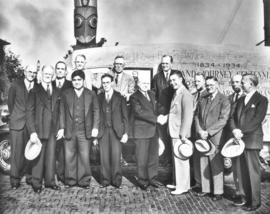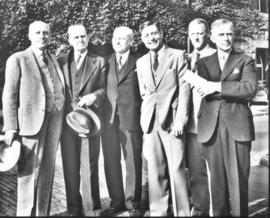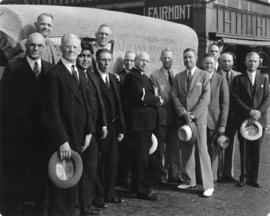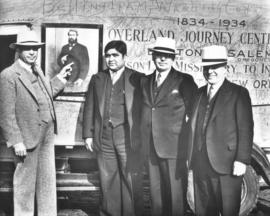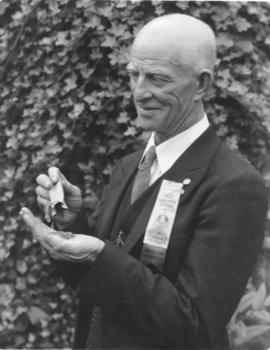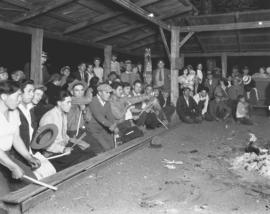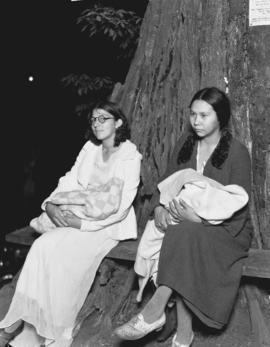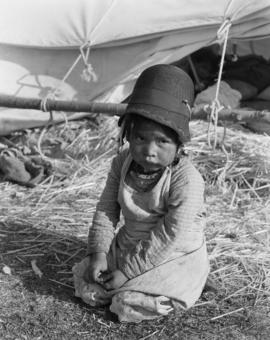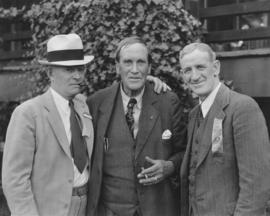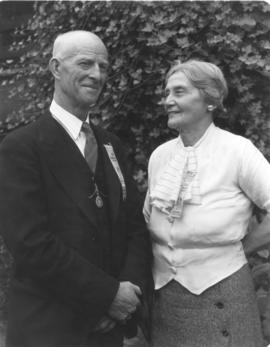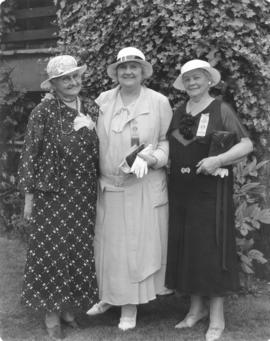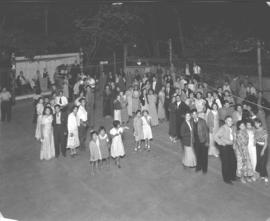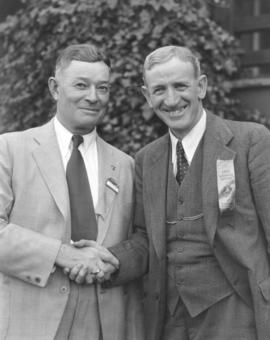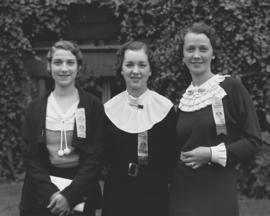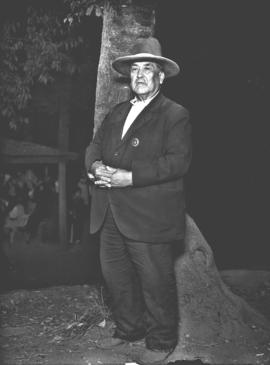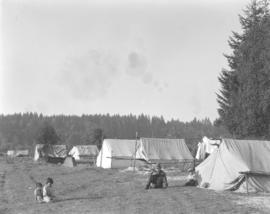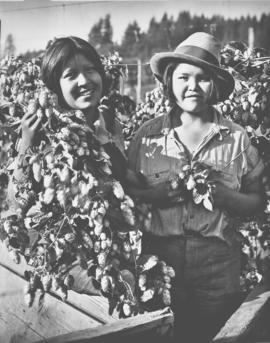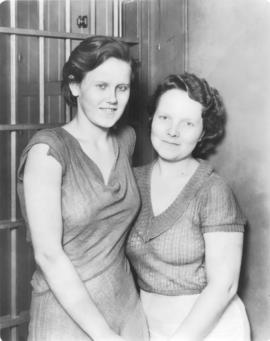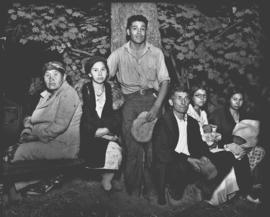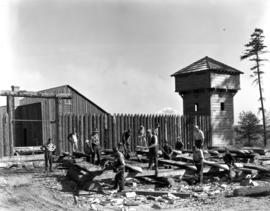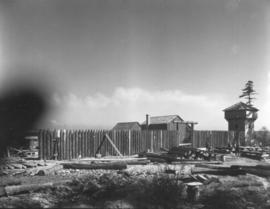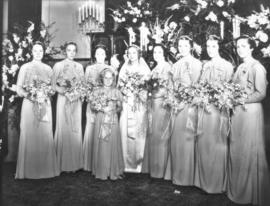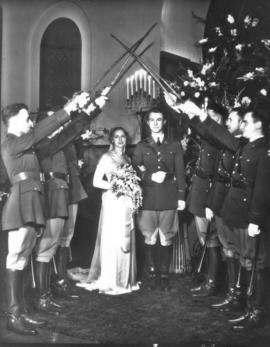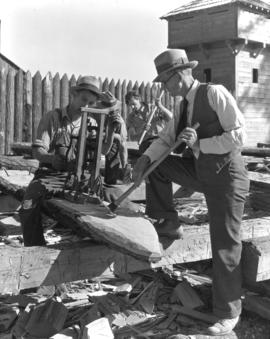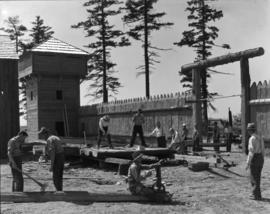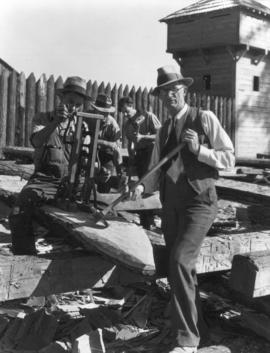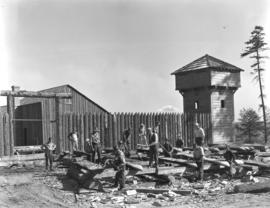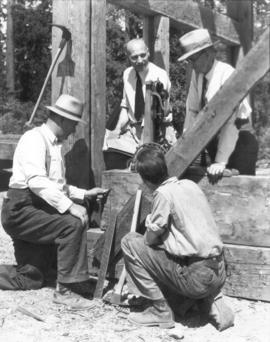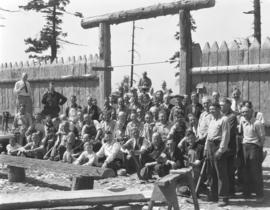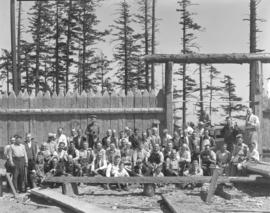- Item
- 1934-08-30
Part of Richards Studio Photographs
Group traveling in caravan to commemorate the centennial of missionary Jason Lee's journey to the Oregon Territory in 1834. Mayor Smitley and others greet the group at the Tacoma Totem Pole where their signed and inscribed truck is parked. The welcoming committee first met them in Fife and escorted them to the totem pole at 10th St. The vehicle appears encased in a heavy cotton material resembling that found on the bonnet of a covered wagon. A portrait of Rev. Lee is attached to the side of the conveyance with the words "1834-1934 Overland Journey Centennial" close by. "Bellingham, Washington" has apparently been scrawled onto the print. Dignitaries included in the August 30, 1934, photograph included Dr. E.D. Kohlstedt of the Methodist home mission board shaking hands with Arthur Rowe of the Y.M.B.C., Mayor Smitley and Rev. J. Franklin Haas of the First Methodist Church (extreme right) and Edward H. Todd, president of C.P.S. (between and behind men shaking hands) and Edward Winter Moon, traveling with the "Jason Lee party," first row, second from left. (WSHS)
Mayors--Tacoma--1930-1940; Smitley, George A., 1872-1956; Tacoma Totem Pole (Tacoma); Commemorations--Tacoma--1930-1940; Kohlstedt, E.D.; Rowe, Arthur; Haas, J. Franklin; Todd, Edward H., 1863-1951; Winter Moon, Edward;
